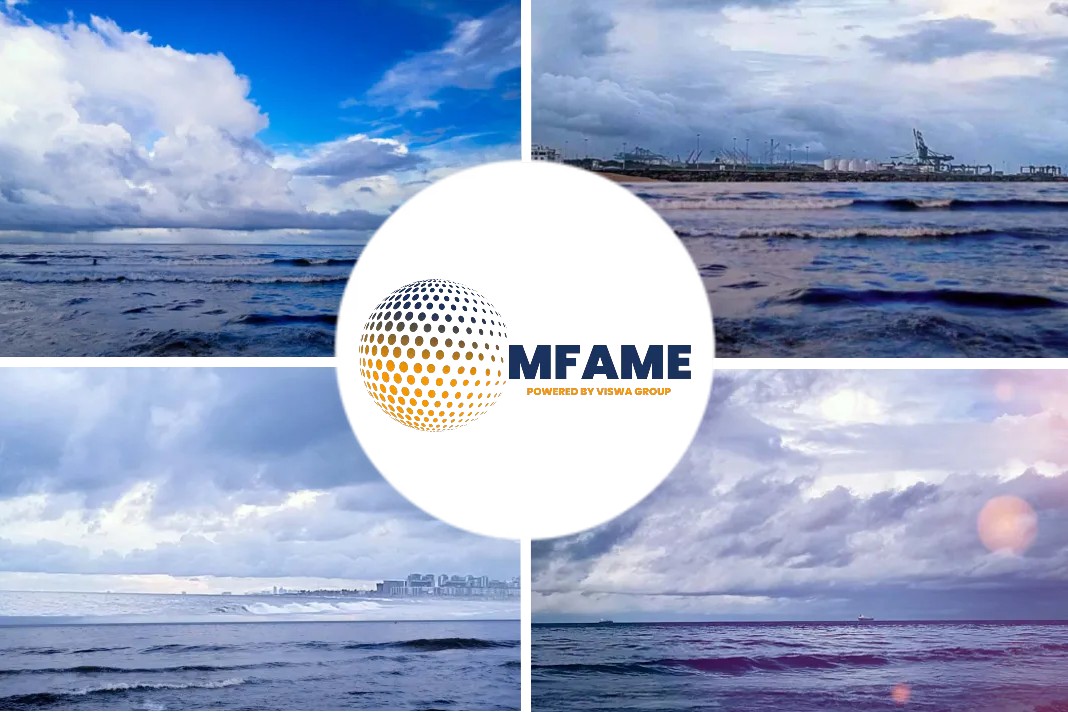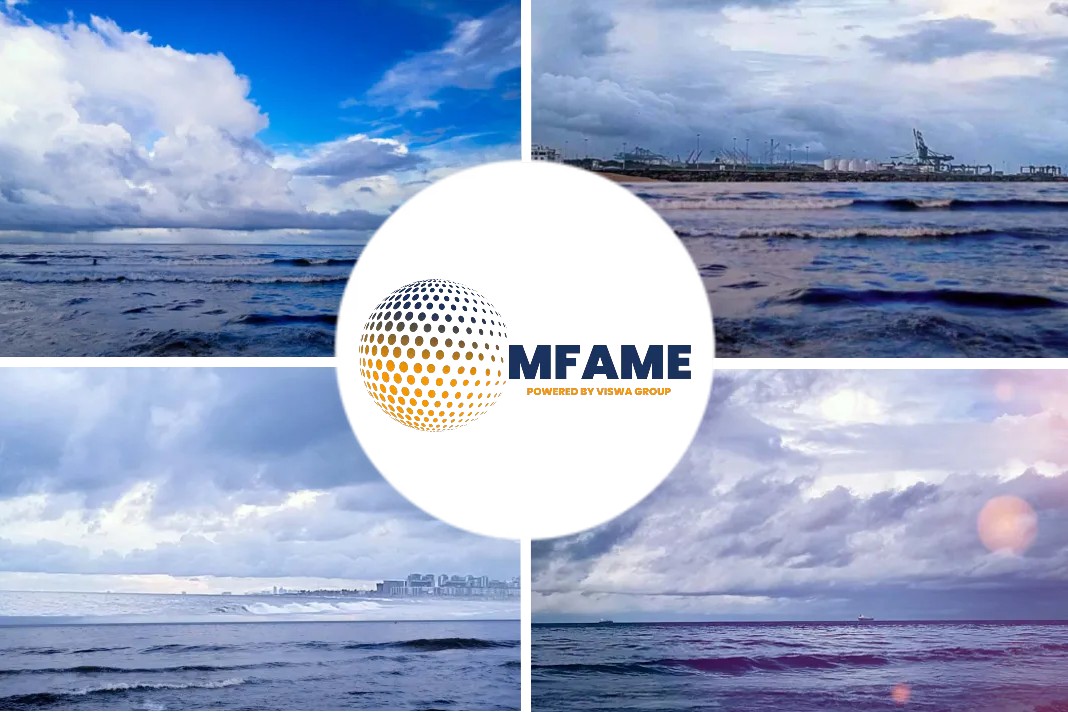A recent news article published in the Marine Insight by Syed Ummar Khalid states that Safety Features on LNG Powered Ships.
The popularity and concerns of LNG-powered vessels
Checking and controlling carbon emissions is vital for the growth and sustenance of the maritime industry. LNG-powered vessels are anticipated to witness significant growth in the market share, as environmental regulations become more rigid. LNG Ships produce 25% fewer carbon and nitrogen emissions.
Moreover, LNG is more affordable compared to the costly low-sulfur heavy oil, which is now being popularly used by most ocean-going vessels.
There has been a tremendous increase in the transportation of LNG, as the value and scope of the LNG trade have risen. Larger ships are now the norm, short-term contracts are becoming more common, and the spot market is becoming more active.
There are, however, some safety drawbacks that must be taken into consideration. Many serious tanker fires have occurred in recent years. In March 2017, a Chinese tanker exploded, causing extensive damage to the vessel and the disappearance of three crew members. In another incident, an explosion claimed the lives of five crew members during a mission in central China in 2012.
The LNG tanker Fuwairit, owned by the Japanese shipping company Mitsui OSK lines, leaked vapour into the port of Barcelona in 2015. In Navantia-Ferrol, they had to fix four cracks in the ship’s deck after a valve and a high-level alarm failed simultaneously. At tank No. 1’s top, a “pool” of floating LNG had developed, and when it came into contact with salt water, it vaporized, creating a gas cloud that can be seen by the condensation of seawater vapour.
A record number of LNG tankers leave Canada’s west coastlines every year, en route to destinations as far afield as Europe and Asia. As a result, the vast majority of tankers now traverse narrow waterways and densely populated areas. As a result, the potential dangers of LNG ships in these waters should never be underestimated.
Advantages of LNG as a marine fuel
LNG can be defined as a gas that has been cooled to a liquid state for the purpose of storage and transportation. Natural gas in a gaseous state occupies approximately 1/1600th of the volume of LNG in a liquid condition. It’s the cleanest fossil fuel and a green energy source that has attracted many industrial sectors including the maritime.
Liquefied natural gas is made up of a variety of hydrocarbons such as methane, butane, propane, and propylene, as well as a trace amount of nitrogen. The exact composition of LNG varies, depending on the source and liquefaction procedure used.
LNG typically contains 85- 95% methane by weight. Liquid nitrogen, sometimes known as “liquid helium,” has a density of 426kg/m3. When it comes to transporting and storing LNG, double-walled containers are used to keep it cool and decrease the chance of leaking.
Because of its ability to satisfy regulatory standards, improve air quality, and reduce greenhouse gas emissions while also lowering costs, switching to LNG can have considerable benefits.
The EEDI rating of LNG-fueled ships can be reduced by 20%, and the Carbon Intensity Indicator can be reduced by around the same percentage. Compared to conventional designs, competitive vessel design provides compliance for an additional ten years after construction is complete.
Modern engine technology can cut particulate matter (PM) GHG emissions by up to 23% while reducing NOx emissions by up to 80% and nearly eliminating sulphur oxide emissions. Drop-in fuels and biogas are other options for decreasing the carbon intensity of vessels.
When consumed, LNG releases fewer nitrogen oxides and carbon dioxide than other fossil fuels because it removes sulfur during the pre-liquefaction process. As a result, LNG is believed to have a minimal environmental impact.
When it comes to LNG-powered ships, the number has grown from a total of 18 operational ships in 2010 to 175 already in operation and more than 200 on order in 2020.
Ensuring safety on LNG vessels
There are a lot of steps that need to be taken before a ship can transport LNG. The following are some examples of LNG operations:
Transfer Procedure: In order to provide safe and efficient loading of LNG, the loading procedure should be carried out in a timely manner after getting the authorisation from the Coast Guard. When loading LNG, the compatibility of the ship and the transfer space are two critical considerations. Weather conditions, appropriate lighting and warning indications are also crucial.
Pre-loading operations: Checking tanks and other equipment, inspecting bunker Hoses and connecting hoses are some of the pre-loading procedures.
Bunkering operations: Transfer lines and the liquid filling line are both sanitized during bunkering operations. In addition, it involves the return of Documents and the ready signal.
After the bunkering procedure is complete, there are still a few things that need to be done. Disconnecting the communication linkages and stripping the transfer lines and hoses are all part of the process.
To ensure the safety of the liquefied natural gas onboard, it must be stored in specially engineered shore tanks. Single containment tanks, double containment tanks, and full containment tanks are the most common types of tanks used to store LNG. A backup tank is always maintained, in case there is a leakage.
LNG is transported through specialised ships that are specifically designed for this task. Membrane tanks and Moss Rosenberg tanks are generally in use today. The International Gas Carrier (IGC) 1986 code and SOLAS 74 chapter VII part C compliance check is required for LNG vessels operating on international seas, according to the International Maritime Organization.
When LNG is exposed to air, it burns in an instant, since it is inflammable. Thus, ships that transport LNG face significant dangers, which could lead to-
● Vapour Cloud Explosions
● Fumigation
● Spills or leakages
● Freezing liquids
● LNG rollover
● Rapid state transition of LNG
● Sloshing
The first four on the list pose a serious threat to marine life and the environment.
Explosion On LNG Ships – What To Do?
In the event of an explosion, the flames that are produced by LNG have a longer lateral reach as well as a higher elevation. Damage to the ship’s construction is just one side effect, but it also puts the lives of the crew in danger, and that means fatality. Consequently, a gas leak in an LNG ship is the most hazardous.
The engine room, motor rooms, and cargo compressor are the most vulnerable parts of the ship to devastation from an LNG explosion on board. The ship must have CO2 fire suppression systems in these three high-risk zones. The fire system must meet a number of predetermined conditions.
Safety measures: In order to ensure the safety of the LNG carrier’s crew in the event of an explosion, the equipment used in its construction must be inherently strong and approved according to the applicable requirements.
Fire suppression systems should be installed on all types of machinery. If an ignition source comes into touch with LNG, it can still pose a threat. In current times, smart ultrasonic technology is included in the fire suppression system, guaranteeing an increased level of safety, for both the ship and its crew.
Vapour Cloud Explosion
A vapour cloud explosion may occur if LNG leaks from ships. Considering how quickly LNG evaporates, its gaseous state has a volume equal to 625 times that of the original form’s liquid state. Because of the leakage of liquefied natural gas into the atmosphere, the initial flash vaporization process begins immediately, resulting in the production of an enormous amount of steam in an instant.
As a result of condensation, the steam interacts with the surrounding atmosphere, to produce fog and smoke. This leads to an enormous vapour cloud explosion due to dilution and heating. LNG is highly flammable and the flames spread rapidly, burning a lot of gasoline and other oils. Re-explosion is an inherent quality of this substance, and it is extremely difficult to extinguish it.
Excessive thermal strains are an aftermath of the cooling process, in the LNG storage tank. It damages the ship’s hull, leading to the emergence of fractures in the hull’s structural integrity.
Leaks and spills involving LNG
Cryogenic burns, asphyxiation, flames, explosions, and dispersion are all possible outcomes if the LNG spills into water. These are extremely harmful and pose a serious threat to public health and safety.
Safety measures: Modern strategies can help reduce LNG spills. LNG tankers should be outfitted with the highest quality safety equipment. The tanks should be constructed with sturdy and durable materials that are shock-resistant and insulated, to prevent leaks and spills. They should also be inspected on a regular basis.
To avoid a collision between the LNG carrier and other ships, it is necessary to keep a safe distance. Additionally, all of the fire alarms and emergency equipment should react quickly in an emergency situation.
Fumigation
Suffocation and environmental hazards are caused when LNG reacts with air during fumigation.
Safety measures: The following equipment must be in proper condition, in order to limit the risk of fumigation.
● Filter
● Manual control valve
● Regulator for vapour draw
● Dual shut-off solenoid valve
● Throttle body
Also, the ship’s ventilation and exhaust systems must be efficient as well. The effects of fumigation can be mitigated with the use of proper ventilation and exhaust valves.
Conclusion
In recent years, LNG shipping has evolved and the consumption of natural gas has grown manifold. It has become a viable alternative to oil as a maritime fuel because of the rising cost of the former.
The transportation and freight industries are witnessing an increased demand for eco-friendly fuels. Hence, all necessary safety measures must be implemented before transporting LNG across the world.
Disclaimer: The authors’ views expressed in this article do not necessarily reflect the views of Marine Insight. Data and charts, if used, in the article have been sourced from available information and have not been authenticated by any statutory authority. The author and Marine Insight do not claim it to be accurate nor accept any responsibility for the same. The views constitute only the opinions and do not constitute any guidelines or recommendations on any course of action to be followed by the reader.
Did you subscribe to our daily Newsletter?
It’s Free! Click here to Subscribe
Source: Marine Insight


















